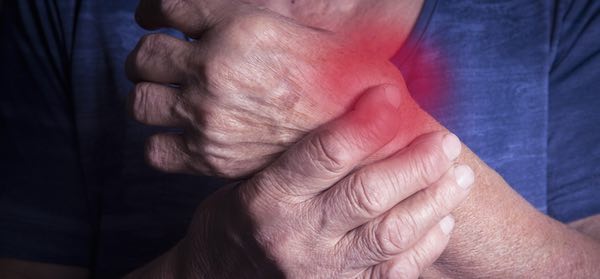Osteoarthritis is the most common form of arthritis. Not only that, it is the only type of arthritis that is caused by joint wear and tear. Other forms of arthritis are mostly autoimmune disorders, where the immune system attacks its own cells.
What is osteoarthritis?
In osteoarthritis, the cartilage – the protective layer that covers the ends of bones – wears down over time and becomes thin. When there isn’t enough cartilage at the joint, the bones are no longer protected. So when the ends of bones rub against each other during movement, it causes painful and limited range of motion.
Which joints are affected?
Osteoarthritis can happen in any joint, but most commonly affects the fingers, knees, hips and the spine.
What are the symptoms?
Osteoarthritis symptoms can vary from day to day, and from one person to the next. The most common symptoms are joint pain and stiffness. Other symptoms include tenderness, swelling, and a creaking sound or feeling upon movement.
Since osteoarthritis makes it painful to move, it affects normal daily activities, such as walking, climbing stairs and opening jars.
What causes osteoarthritis?
In many people, there is no clear cause of osteoarthritis. It develops gradually over many years and before symptoms become noticeable.
However many factors can increase the likelihood of developing osteoarthritis, including:
- having a family history od osteoarthritis
- being overweight
- being physically inactive
- suffering a previous joint injury (such as dislocation or fracture)
- overusing your joints, such as from too much kneeling, squatting, climbing and heavy lifting
- increasing age.
Who is typically affected?
Osteoarthritis becomes increasingly common with age, with 75 per cent of those affected being 55 years or over. It is also more prevalent in women than men, especially in the older age group.
How is osteoarthritis treated?
While there is presently no cure for osteoarthritis, there are ways to manage your pain and look after joint health to maintain movement and independence. Here are some things you can do to manage your osteoarthritis symptoms.
Exercise
Exercise is an important part of osteoarthritis management. Regular exercise reduces joint stiffness and strengthens muscles that support the joints. Exercise also helps you to look after your body weight, which is also important for protecting joints. Everyone’s fitness level and limitations will be different. So for suitable and safe exercises, ask your doctor or physiotherapist to develop a program for you.
Eat a healthy diet
There is no specific diet or food that reduces osteoarthritis symptoms. A healthy, balanced diet is best for weight control to reduce stress on your joints.
A healthy diet includes a wide variety of nutritious foods from all five food groups, and has minimal processed foods. You may wish to see a dietitian to get tailored advice.
Be at a healthy body weight
Extra body weight increases the stress on many joints, especially your knees, hips and lower back (spine). In osteoarthritis, this can cause pain and further wearing down of the cartilage. If you are carrying extra weight, losing it will decrease the stress on your joints and protect them. It will also ease any pain and make it easier to move.
Educate yourself
Educating yourself on how you can best manage your osteoarthritis is called ‘self-management’. Self-management is very encouraging because it helps you to control your symptoms and be more independent. Arthritis Australia in each state and territory regularly runs self-management courses.
Use heat/cold therapies safely
Applying heat or cold to affected joints can help to soothe symptoms, but it must be done safely. Cold (such as ice packs) is usually soothing for hot and swollen joints, especially during flare-ups in the joint. Heat (such as a heat pack, hot water bottle or a warm bath) can be helpful to reduce pain and stiffness.
Ask your doctor or physiotherapist to advise on whether heat or cold is best for you, and how to apply it safely.
Take medicines wisely
There are different types of medicines that help to relieve osteoarthritis pain. Some are taken orally, such as tablets and capsules, and some are applied topically, such as gels. Common non-prescription medicines recommended by health professionals for osteoarthritis pain are:
- analgesics (pain relievers), such as paracetamol
- non-steroidal anti-inflammatory drugs (NSAIDs), including topical and oral options such as diclofenac gel and ibuprofen tablets.
It is important to speak to you doctor or pharmacist, who can explain which medicines are right for you and how to best use them.
For support and self-management courses, call Arthritis Australia on 1800 011 041 or visit their website.
Related articles:
Arthritis explained
Coping with osteoarthritis
Living with arthritis

